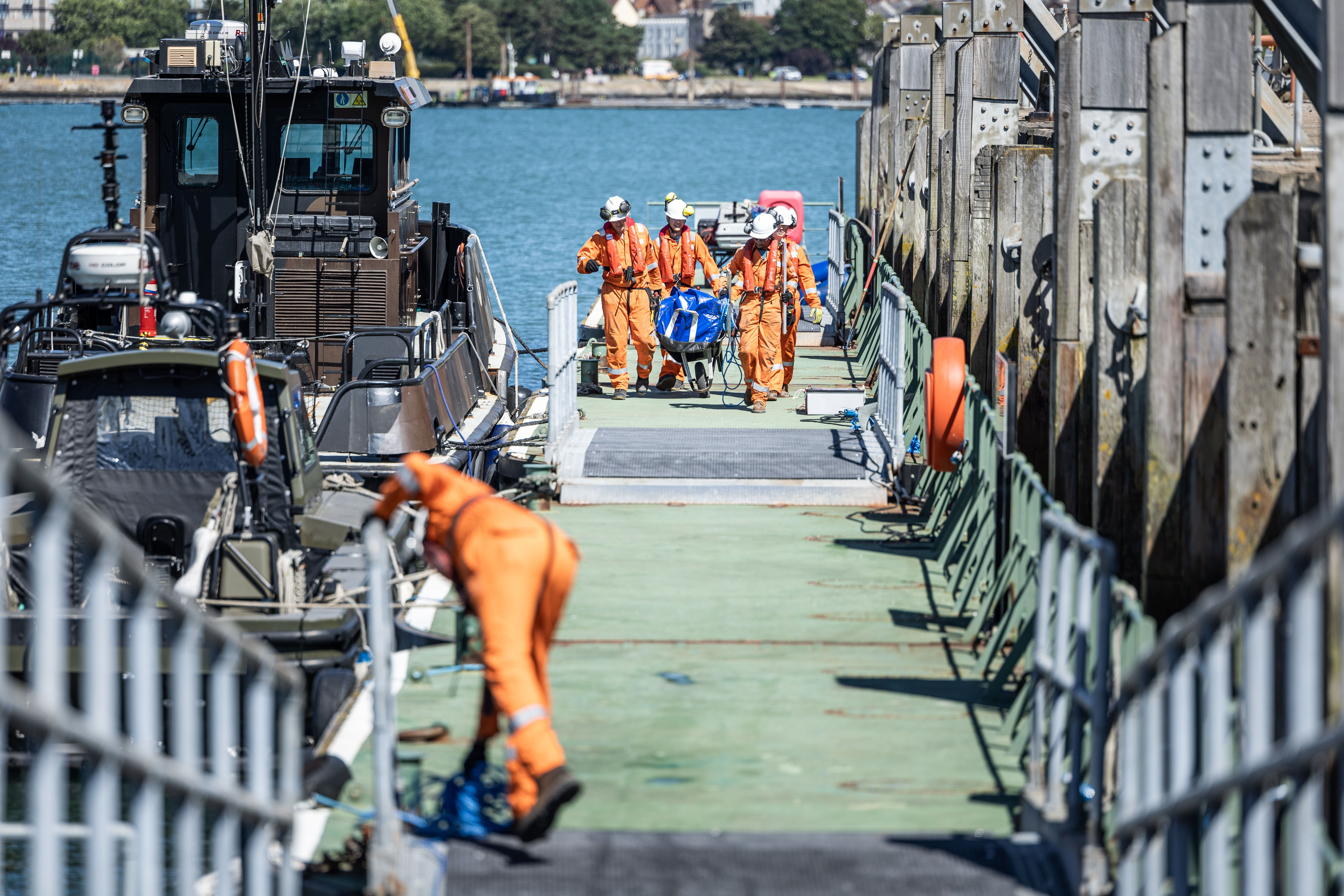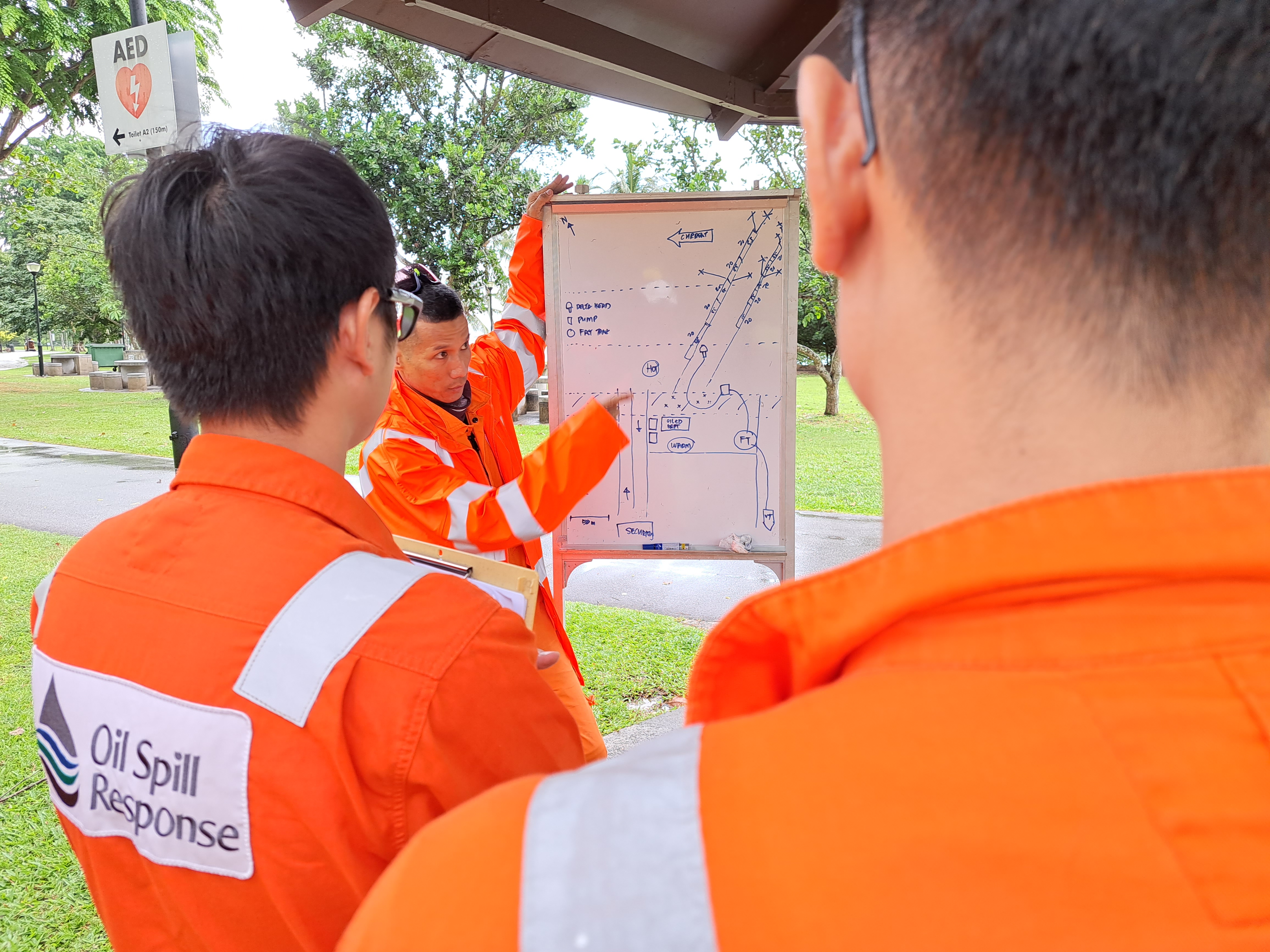Aproveitando o videoblog ao vivo para treinamento SCAT virtual
Introduction
The COVID-19 pandemic changed training delivery worldwide, especially in fields like oil spill response that rely on hands-on, field-based instruction. With travel restrictions and lockdowns, OSRL was challenged to adapt Shoreline Cleanup Assessment Technique (SCAT) training for virtual delivery. While virtual instruction allowed continuity, replicating the field-based elements of SCAT presented significant obstacles.
OSRL developed an innovative solution: live videoblogging. This approach enables trainees to interact with a live video feed of a trainer surveying a shoreline, providing a "field" experience participants can join in real time from anywhere. This methodology bridges the gap between virtual instruction and practical fieldwork, paving the way for more dynamic, immersive online training.
The Benefits of Live Videoblogging in SCAT Training
1. Enhanced Real-Time Engagement
SCAT training requires hands-on skills to assess shorelines for oil spill impacts. Live videoblogging lets trainees follow along as the SCAT Specialist navigates a shoreline, pointing out key features and completing an Oiled Shoreline Assessment form. Trainees can request specific views and additional information, tailoring the experience to their needs and strengthening engagement.
2. Problem-Centred Learning
Adult learners benefit from training that tackles real-world problems rather than abstract theory. Videoblogging provides practical, field-oriented scenarios, with trainees guiding the SCAT Specialist remotely. This realistic, hands-on approach builds both confidence and capability in shoreline assessment.
3. Collaboration and Role-Playing
Videoblogging enhances collaborative learning. During the training, participants assume different roles within an Incident Management Team , gaining insight into how their roles intersect. This role-playing dynamic fosters communication, teamwork, and problem-solving—skills essential for real-world oil spill responses.
4. Overcoming Virtual Training Limitations
Virtual training can sometimes struggle to maintain participant engagement. Videoblogging, with its immersive format, keeps participants’ attention, helping them stay focused and actively involved. This interactive element boosts the overall learning experience.
Building a Virtual Shoreline Experience
OSRL selected accessible shoreline locations for live sessions, with special permissions as needed during the pandemic. Trainers and SCAT Specialists collaborated to ensure seamless operations and connectivity. Key preparations included:
- Site Reconnaissance: Trainers identified shoreline locations with diverse features for assessment, such as fishing boats and public amenities.
- Scenario-Based Exercises: Each session followed a realistic scenario, giving participants a structured learning experience.
- Platform Familiarisation: Trainees were introduced to the virtual platform in advance to minimise technical disruptions.
Applications Beyond SCAT Training
Videoblogging’s success in SCAT training suggests broader applications across oil spill response:
- UAV Integration: Unmanned aerial vehicles (UAVs) could capture video in inaccessible shorelines, with the SCAT Specialist providing commentary. This application would enable training in hard-to-access areas while ensuring safety.
- Real-Time Field Updates to Incident Command Post: Videoblogging could be a real-time communication tool during live response events, delivering critical updates from the field and supporting faster, informed decision-making.
Embracing Innovation for Enhanced Training Outcomes
Live videoblogging has emerged as an effective alternative to in-person SCAT training, creating a practical, engaging experience that overcomes the limitations of virtual training. OSRL’s successful implementation of videoblogging, which has received consistently positive feedback, demonstrates its potential as a dynamic learning tool that can be adapted for diverse response scenarios.
As we look ahead, live videoblogging may become a staple in oil spill response training, offering a flexible, scalable solution that prepares responders with the skills they need for effective action.






